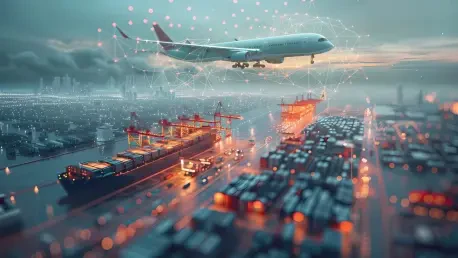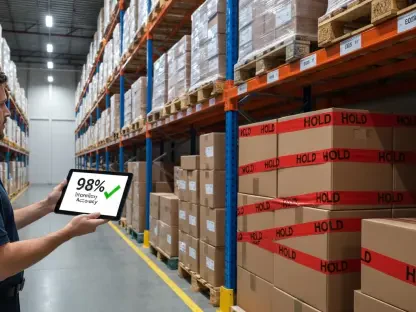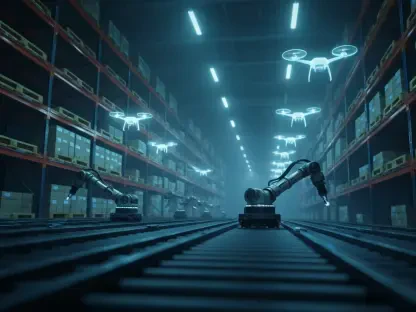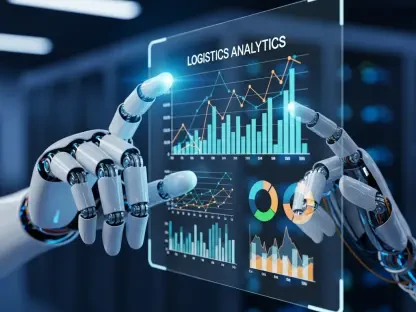The Logistics Landscape: A Digital Transformation
The logistics industry stands as the backbone of global trade, orchestrating the movement of goods worth trillions annually across intricate supply chains that span continents. This sector ensures that everything from raw materials to finished products reaches its destination, supporting economies and businesses worldwide. With such a pivotal role, the industry faces constant pressure to adapt to rising demands for speed, efficiency, and reliability in an increasingly interconnected market.
Key segments within logistics include freight transportation, which handles the bulk of goods movement via road, rail, air, and sea, alongside warehousing for storage and distribution. Digital platforms have emerged as critical enablers, connecting shippers and carriers while providing real-time visibility into operations. These platforms are reshaping how stakeholders interact, streamlining processes that once relied on manual coordination and outdated systems.
Technology, particularly data analytics and artificial intelligence (AI), drives much of the current transformation. AI’s growing influence is evident in route optimization, demand forecasting, and operational efficiency, pushing the boundaries of what logistics can achieve. Leading players like Uber Freight are setting new benchmarks by integrating such innovations, while regulatory frameworks—covering transportation safety and data privacy—continue to shape the industry’s evolution, balancing progress with accountability.
AI in Logistics: Uber Freight’s Pioneering Role
Emerging Trends in AI-Driven Logistics
Artificial intelligence is rapidly becoming a game-changer in logistics, with trends like predictive analytics enabling companies to anticipate demand fluctuations and optimize resources. Conversational AI and autonomous voice agents are also gaining traction, facilitating seamless communication between systems and stakeholders. These tools address the industry’s need for speed and precision in an era where delays can cost millions.
User expectations have shifted dramatically, with shippers and carriers demanding faster, data-driven tools to make informed decisions on the fly. This push for immediacy is fueled by market drivers such as cost reduction and operational efficiency, creating fertile ground for AI integration. Opportunities abound as companies leverage these technologies to tackle inefficiencies and enhance service delivery.
Uber Freight stands at the forefront of this shift, introducing innovations like generative chatbots that allow users to query complex data in plain language. Additionally, proactive systems identify underperforming lanes or suggest intermodal solutions before issues escalate, demonstrating how AI can transform raw information into actionable strategies for logistics professionals.
Growth and Impact of AI Technologies
The adoption of AI in logistics has surged, with Uber Freight managing $18 billion in freight, providing a robust foundation for scaling such technologies. This vast data pool enables the company to refine algorithms and deliver precise insights, setting a standard for others in the sector. Performance metrics underscore the impact, with driver hold times slashed by nearly 100% through autonomous voice agents handling initial negotiations.
Security has also seen significant gains, as AI tools have driven a 72-73% reduction in fraud incidents at Uber Freight. By identifying patterns and flagging suspicious activities, these systems tackle a persistent challenge in logistics, especially for high-value shipments. Such advancements highlight the dual role of AI in enhancing both efficiency and trust across operations.
Looking ahead, projections suggest AI will further revolutionize logistics by streamlining processes and bolstering security measures. From predictive maintenance to real-time risk assessment, the technology promises to reshape how the industry operates over the coming years, with pioneers like Uber Freight leading the charge in harnessing its full potential.
Challenges in AI Adoption for Logistics
Adopting AI in logistics is not without hurdles, as operational risks loom large, including potential errors in automated decision-making that could disrupt supply chains. Fraud vulnerabilities also persist, with sophisticated schemes targeting digital platforms. These challenges underscore the need for robust safeguards to prevent costly missteps.
Technological barriers add another layer of complexity, as ensuring AI accuracy requires extensive testing and validation. Integrating these systems with legacy infrastructure often proves cumbersome, slowing down deployment and increasing costs. Companies must navigate these issues carefully to avoid compromising service quality or operational stability.
Uber Freight addresses such concerns through a “humans in the loop” philosophy, maintaining human oversight in critical areas to ensure accountability. Strict guardrails are also in place to limit automation’s scope, preventing over-reliance on algorithms. This balanced approach helps mitigate risks while allowing the company to capitalize on AI’s benefits in streamlining logistics tasks.
Regulatory and Ethical Considerations in AI Logistics
The regulatory landscape for AI in logistics is multifaceted, encompassing data protection laws that safeguard sensitive information and transportation regulations ensuring safety and compliance. These frameworks aim to curb misuse of technology while fostering innovation. Navigating this environment requires companies to stay agile amid evolving standards.
Compliance is paramount, particularly in securing AI systems against fraud and errors that could undermine trust. Robust security protocols must be embedded to protect data integrity and prevent unauthorized access. Meeting these requirements often demands significant investment but remains essential for maintaining credibility in a competitive market.
Uber Freight prioritizes governance by ensuring human involvement in key decisions like pricing and bookings, avoiding full automation in sensitive areas. Ethical considerations are equally critical, with transparency and accountability at the core of its AI deployment. This commitment helps build confidence among stakeholders, reinforcing the importance of aligning technological progress with principled practices.
The Future of Logistics: AI and Human Collaboration
Artificial intelligence is poised to remain a central force in logistics, driving efficiency through advanced predictive systems that anticipate disruptions before they occur. Broader orchestration of networks and people will likely define the next phase, enabling seamless coordination across diverse touchpoints. This vision points to a more interconnected and responsive industry.
Emerging disruptors, such as debates over full automation and consumer demands for transparency, could reshape priorities. Balancing these factors with economic conditions and regulatory shifts will influence how quickly AI adoption scales. Global trade dynamics and policy changes may either accelerate or hinder progress, depending on their alignment with industry needs.
Uber Freight envisions a future where cutting-edge technology complements human expertise, fostering sustainable growth rather than replacing essential roles. By integrating AI as an enabler, the company aims to maximize network benefits while preserving the human element, offering a model for how logistics can evolve without losing its core values.
Conclusion: A Balanced Path Forward
Reflecting on the insights gathered, Uber Freight has carved a distinct path in logistics by harnessing AI for predictive insights and fraud prevention, fundamentally altering operational norms. The company’s achievements, from slashing driver hold times to enhancing security, underscore the transformative power of technology when guided by careful oversight.
Looking ahead, industry stakeholders should prioritize a balanced strategy, adopting AI to boost efficiency while embedding ethical and regulatory compliance into every layer of innovation. A deeper focus on collaboration between automated systems and human judgment can serve as a safeguard against potential pitfalls.
Ultimately, the journey of logistics points toward a promising horizon, with Uber Freight’s orchestration model laying a foundation for human-centric progress. Embracing this blueprint, the sector can navigate future challenges by investing in technologies that empower people, ensuring that innovation remains a tool for connection rather than isolation.









